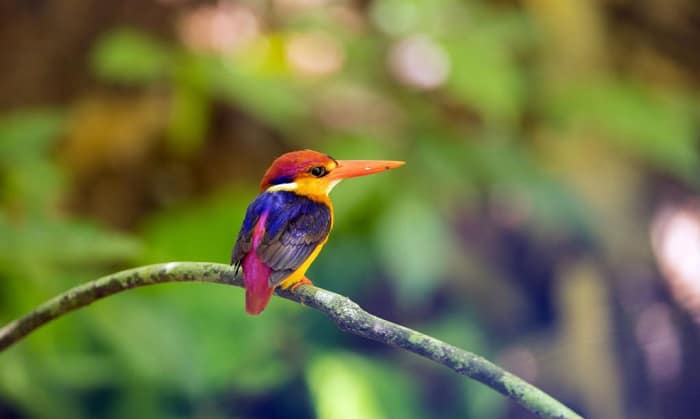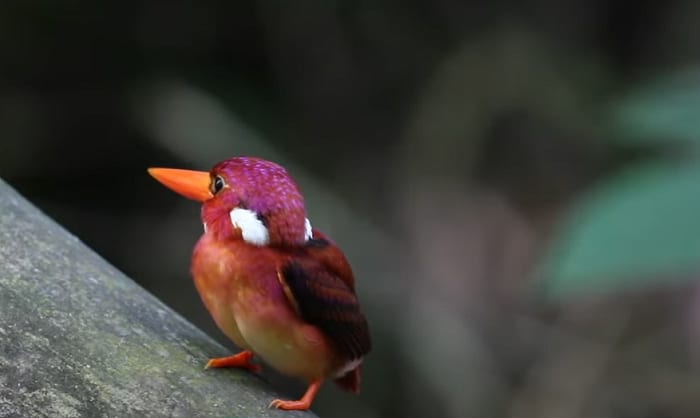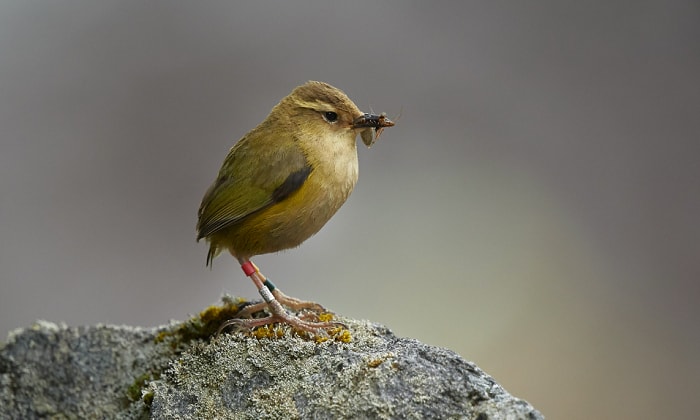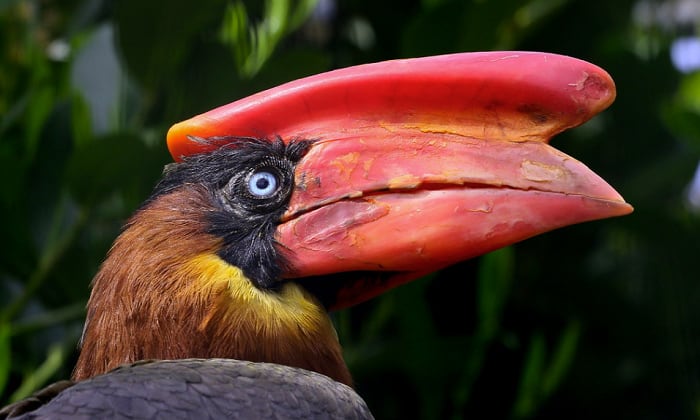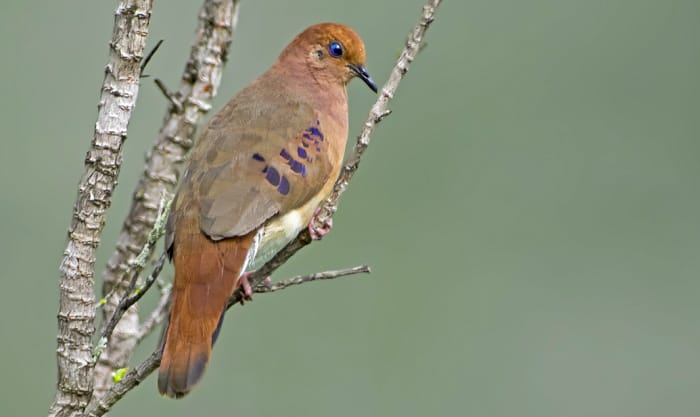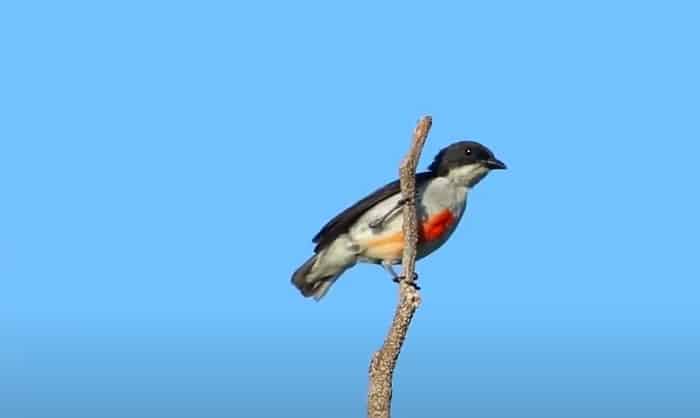Do you like watching colorful birds flutter around? Are you an avid bird watcher looking to get a sight of the rarest birds in the world or in North America? If yes, then you are probably aware of several conservation programs working hard to protect threatened and endangered birds, including the second rarest bird in the world. We hope you learn more about the beautiful rare birds in the world that will light a fire in your heart. Read on.
Table of Contents
The World’s Rarest Birds
In the past decade, approximately eight birds have been declared extinct. Looking back 500 years ago, the number of bird species that can now only be seen in images and not on earth is 183. Bird extinction is not a thing of the past but a danger that many species face and is too far from gone.
Out of all the known avians, around one-eighth of them are threatened with extinction. These uncommon birds require conservation, with only a few dozen or worse, one or two birds surviving. Here are seven different types of rare bird species you should know.
1. South Philippine Dwarf Kingfisher
- Scientific Name: Ceyx mindanensis
- Estimated population: 2,500 to 9,999 mature individuals
- IUCN Status: Vulnerable
- Location: The Philippines
1. Overview
The Philippine Dwarf Kingfisher is part of the Alcedinidae family that is endemic to several islands in the Philippines. The birds’ natural habitat is damp lowland forests.
2. Description
This bird species is small in size. It has a white belly, a red beak and legs, and primarily orange fbody. You can distinguish it from its northern subspecies by its dark blue-spotted wings and light lilac hue.
3. Threats
Birdlife International tagged it as vulnerable due to its population trend being threatened by extreme habitat loss.
4. Conservation
While there are no conservation plans for the Philippine Dwarf Kingfisher, there are some protected areas throughout several natural and natural parks.
2. New Zealand Rock Wren
- Scientific Name: Xenicus gilviventris
- Estimated population: 5,000 mature individuals
- IUCN Status: Endangered
- Location: New Zealand
1. Overview
This bird is also known as a rock wren, especially outside New Zealand. Since it is a low flier, it is currently confined to subalpine and alpine areas of the South Island.
2. Description
This bird is on the smaller side and appears almost tailless. It has long legs and prefers to run or hop, only flying short distances with its rounded wings.
3. Threats
The decline in the number of these birds is because of introduced predators, like stoats and mice that eat the eggs and young birds.
4. Conservation
Conservationists announced that they are stepping up to help protect this bird species. The Anchor Island in Secretary Island in the far south is being managed intensely and closely monitored to keep them free from invasive predators.
3. Rufous Headed Hornbill
- Scientific Name: Rhabdotorrhinus waldeni
- Estimated population: 1,000 to 2,499 mature individuals
- IUCN Status: Critically Endangered
- Location: Philippines
1. Overview
Rufous Headed Hornbill is primarily a fruit eater and is social, gathering in groups of up to four. They are commonly found in Negros and Panay Islands.
2. Description
They have a bony casque protruding from the top of their bills. Their structure is light, with thin, hollow bone cells. They also have a red-orange, wrinkled appearance.
3. Threats
Human activity such as severe deforestation, excessive hunting, and nest poaching is why these birds are now locally extinct.
4. Conservation
The nest-guarding program introduced by local organizations significantly decreased poaching. The population is now seeing an increase thanks to the successful conservation efforts.
4. Blue-eyed Ground-dove
- Scientific Name: Columbina cyanopis
- Estimated population: 50-249 mature individuals
- IUCN Status: Critically Endangered
- Location: Brazil
1. Overview
It was thought to be completely extinct since it had not been seen since 1941. But it was sighted again in 2015. The remaining three distinct groups of Blue-Eyed Ground-Dove are separated by more than a mile and are considered one of Brazil’s rarest birds.
2. Description
As its name suggests, this bird is known for its vivid blue eyes that match its wings, starkly contrasting with the rest of its rufous and tawny plumage.
3. Threats
The rapid rate of habitat loss in the region leads to the continuing decline of these blue-eyed birds.
4. Conservation
Since its recent discovery, several organizations have worked together to find and protect the remaining Blue-Eyed Ground-Dove. Ongoing support is still needed since the following years are crucial in stabilizing their population.
5. Cebu Flower Pecker
- Scientific Name: Dicaeum quadricolor
- Estimated population: 60-70 mature individuals
- IUCN Status: Critically Endangered
- Location: Philippines
1. Overview
Cebu Flower Pecker was feared to be completely extinct until its rediscovery in 1992. It was seen in a small limestone forest of the Central Cebu Protected Landscape.
2. Description
This small passerine bird is four-colored (white, blue, yellow, and red) and grows approximately 11 to 12 centimeters. It eats flowers and small fruits.
3. Threats
Extensive habitat clearance is the primary cause of the declining population of this bird. Other threats include illegal settlement, shifting cultivation, road construction, and logging.
4. Conservation
With the joint force of the local government and conservation foundation, there are conservation programs for forest protection and habitat rehabilitation.
6. Madagascar Pochard
- Scientific Name: Aythya innotata
- Estimated population: 20 to 49 mature individuals
- IUCN Status: Critically Endangered
- Location: Madagascar
1. Overview
The Aythya innotata is an extremely rare diving duck that was thought of and considered extinct in the late 1990s. It is endemic in Madagascar, with the wild population currently living at Lake Matsaborimena and Lake Sofia.
2. Description
This pochard species is pale, chestnut, or dull brown with brown irises and a darker colored stomach. Their shade can vary depending on the gender and if it is breeding or experiencing their first winter.
3. Threats
In the late 1940 and early 1950s, the population of these birds started to decline, and the introduction of several fish species in the lake caused their numbers to dwindle. Other reasons that led to the ducks being endangered are rice paddies cultivation, hunting, gill-net fishing, cattle grazing, and burning of shore vegetation.
4. Conservation
The Madagascar Pochard’s last sighting was in 1991, followed by its rediscovery in 2006. In 2009, A captive breeding programs and rescue plan removed a batch of ready-to-hatch eggs and incubated them in a lab near the lake. Years later, preparations for reintroduction at a suitable lake in Madagascar were done.
7. New Caledonian Owlet-nightjar
- Scientific Name: Aegotheles savesi
- Estimated population: 1 to 49 mature individuals
- IUCN Status: Critically Endangered
- Location: New Caledonia
1. Overview
Also known as the enigmatic owlet-nightjar, this endangered species is endemic to the Melaleuca savannah and humid forests of New Caledonia. They are only known from two sightings in 1880 and 1915. In 1998, a sizeable nightjar-like bird was seen in Rivière Ni Valley. It suggests there is a small number of them, in the wild.
2. Description
The New Caledonian Owlet-Nightjar has a vermiculated black and grey-brown plumage. It is large with a long, slightly rounded tail, long, stout legs, and short, rounded wings. Their sound is unknown, but its relative species has a whistling and churning voice.
3. Threats
This forest owlet is believed to have suffered invasive species and high predation rates in their nests and adults. Other threats that could’ve led to the decline in population are habitat loss due to logging, mining, and fire.
4. Conservation
There are conservation efforts underway and proposed to protect the New Caledonian Owlet-Nightjar. Aside from making their habitat a protected area, rat control is also in place.
Other endangered birds are the Northern Bald Ibis, Golden Pheasants, Great Indian Bustard, Red Crowned Crane, Imperial Amazon, and Orange Bellied Parrot.
Conclusion
Now that you have learned a lot about the rarest birds in the world, it is time to extend a helping hand to save these rare beautiful birds. There is still hope for the future, with many conservation and recovery efforts in place to help the world’s rarest bird bounce back.
Suppose you are one of the many who want to keep seeing these critically endangered but cool birds in the wild, spread awareness about their situation. Share this article with anyone who wants to read about the world’s rarest birds.
Moreover, discover other topics that are related to species of birds:

George and I became friends after a birdwatching trip with our new group. And we have been enjoying every adventure together. When he told me the idea of establishing a site that shares our experiences and fun, I immediately agreed. After trials and errors, here we have Thayerbirding.


